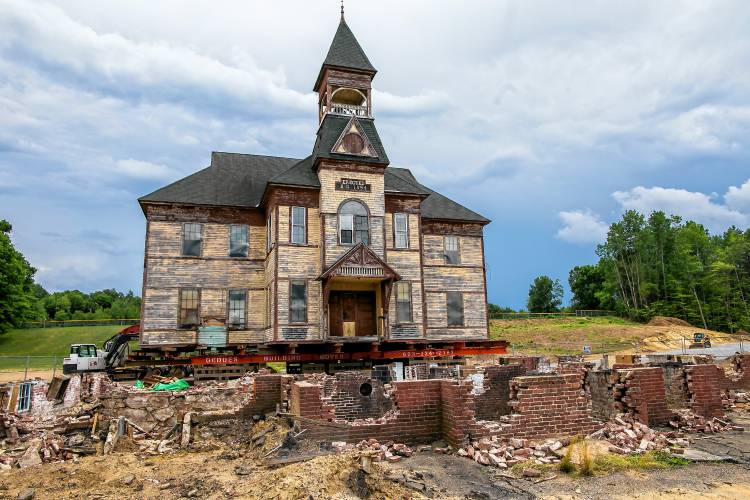It used to be common – or at least not rare – for communities to uproot entire buildings and move them blocks or even miles away.
For example, my town’s Town Hall was once the Congregational Church across the street. When the congregation decided to build a new church they sold it to the town, which picked it up, rolled it across the street, turned it around so it faced the street, then raised it and added an extra floor underneath, turning the church into the upstairs meeting room. (It’s now the town museum)
Similarly, the two-story Center School next door, the only one of five schools in town that had more than one teacher, before educational consolidation around World War I, was uprooted, put on logs and rolled half a mile down our main street to be used as house and then storage shed. It was later torn down.
These stories aren’t at all unusual. That’s one of the reasons local history can be hard to unravel – things that you think of as immovable used to move.
It’s rare these days, however. Belmont’s move of the historic Gale School to make way for a new school is big news. (Latest of many Monitor stories here)
Why the change over time? Economics, of course. Changes in logistics, building materials and standards means that it’s now almost always cheaper to gather new materials and build a new structure than to move and upgrade an old one. Unless there’s a significant historical reason, we tear down and replace – a far more wasteful system. Progress?


 Return to the Concord Monitor
Return to the Concord Monitor
I would also assume the proliferation of overhead infrastructure: utility lines and traffic signals and overarching streetlights – as well as general increase in vehicle traffic along ever-busier roads – all create logistical challenges as compared to early 20th century. Closing a road to move a building may have been far easier 50 to 100 years ago. Consider railroad or highway overpasses as barrier. Getting the new NH wind tower nacelles to their mountaintop sites was a transportation feat: trucked on low-bed trailers from railroad yards
Moving buildings was also common on farms as agricultural practices changed. Thomas Hubka’s excellent book “Big House, Little House, Back House, Barn” has discussions of this, as well as several examples from actual properties.
I think the comment by Dave Anderson is correct. Temporally moving overhead infrastructure is difficult and I assume very expensive. Not to mention closing roads to traffic due to oversize loads.
Here’s a story about the move: https://www.concordmonitor.com/Gale-School-moves-to-new-location-35343073